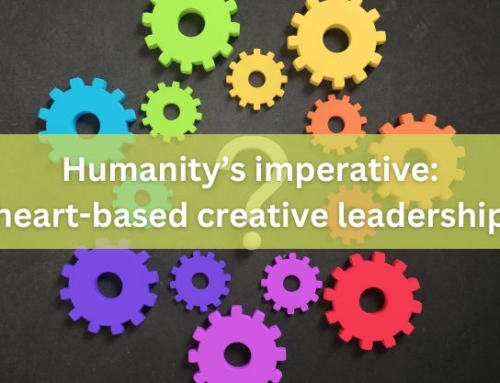Triumph of the relational
Michael Taylor, GP
Published in JHH13.3 – Saving the NHS
I have several pious friends who are ostentatiously humble.This behaviour I find irritating.Why am I telling you this? It’s because I am fearful that this short essay may be a sign that I am morphing into that self-same personality type. For years I have banged the drum ‘the people with the diseases rather than the diseases people have’. I am certain that I have bored stiff anyone remotely connected with the care industry foolish enough to walk slowly by. No one has yet run screaming from my lingering handshake, but I worried that it was on a matter of time. Such worries are now firmly in the past as a result of my Damascene revelation, described below.
Respect for individuality and relationship are profoundly important in the context of elders’ care Click To Tweet For 21 years, my wife ran a home for the elderly; sometimes it was a care home, sometimes a nursing home, the title depending more upon the fashionable whims of the regulatory authorities than on the needs of the residents. I visited regularly, routinely on Wednesdays from midday ‘til whenever, and at other times when necessary. Together, with other members of our team I took pride that our ‘home’ was the best around. The home seldom had a spare bed available: the beds of course determining the number of residents. All except the very occasional resident was paid for by the local authority, so with the downward pressure on support prices and the upward pressure on service provision it was only a matter of time before we were unable to continue. I have many memories of that those 21 years but there are two that took me completely by surprise, so they are, I think, worth retelling.
Tea and sympathy
Once, and once only, I gave tea to all the residents, most of whom I had known as my patients long before. We were in one of the two large lounges and there would have been 11 or so, mainly women there, all too frail to look after themselves. The matter was simple, it was to be a cup of tea and a couple of biscuits at 11am as was usual. What astonished me, and what I didn’t fully understand for years afterwards, was how pernickety each resident’s idea was about exactly how they wanted their cup of tea. Though there were but three variables – tea, milk, sugar – no two were the same, so my head was reeling with the variety of instructions and permutations. My second story is about the time I had to call in the residents’ families to explain that due to finance, or rather the lack of it, we were having to close. I had expected a very difficult evening, but frankly I was shocked by their under[1]standing; their sympathy for our predicament and their good wishes for our future. I’m sure readers of this journal will be able to tell me that the tea party was more an expression of individuality than just a way of having liquid refreshment. And that the families’ trust and sympathy was rooted in the long-running relation[1]ships we had with them.
How my eyes were opened
The point I’m making is that respect for individuality and relationship are profoundly important in the context of elders’ care. And I thought we had done pretty well in this regard and that with respect to homes for the elderly, I had been there, done that, got the T-shirt and there was nothing anyone could tell me I didn’t already know. Or so I thought, until two new friends confronted my self-righteous certainty about providing personal care with the challenge that I should write a short essay about a single patient I remembered well. As a reward, one of them would buy me dinner.
I soon realised that despite seeing myself as a champion of holism, my understanding of care of the elderly and infirm lacked a real appreciation of relational continuity. However, their words and my desktop research into related matters led me on a fascinating journey. So rather than simply acquiesce that I was wrong, I determined to stick with the challenge and see where it would lead me. Around this time I was absorbing what people at the forefront of nursing like Tom Kitwood (1993) Dawn Brooker (2007) and Mike Nolan (Lundh and Nolan 1996) had to say about ageing and dementia care. I wrote: ‘Their descriptions of personal care and relational care made me realise that the homes of which I was aware were not delivering the care which was described. The bedrock to their framework is relationships: between staff and residents, home and care home, family and the outside world. Some village communities in the UK, especially those in undisturbed populations for example in the Highlands of Scotland, run their own homes for the elderly, with paid staff from the local population.’
Discovering relational care
As I wrote these words it was the village of Killin, a community I had known for many years, which I had in mind. I knew of the stable population and of the delight people took in each other’s company; of the bonds of friendship and music, duty, participation, which bound the community together. I knew of the home where a relative, Jane, was a trustee.
I arranged to visit the morning of Saturday 10 September. We – me with Jane and Jimmy, the chair of the trustees – entered together. I knew my first task was an olfactory one; I was pleased that there was none of the odour so common in homes for the elderly. Jimmy led us to the lounge where there were five comfortable chairs, a moderately large flatscreen TV, an electronic organ plus an electronic piano. The room, like the building, was substantial middle class and Victorian, warm and with photos and a carpet of the sort that the elderly often have in their own homes, with clean paint on woodwork and walls. It was in short, a home where most middle-aged people would feel physically and visually perfectly comfortable.
My understanding of care of the elderly and infirm lacked a real appreciation of relational continuity
From my recent research and my own past experience, I had come to understand many of the difficulties homes face. I had my questions in my head but first over tea and sponge cake I let my hosts guide me in what they wanted to tell before asking my own questions of Jane and Jimmy. The home, they told me, was 12 years old. The then chair of the community council for Killin and surrounding farms was the late John MacPherson. I had passed his photo portrait in the hallway. He was ‘from the North’ and ‘had been a policeman in Edinburgh’ before settling into a transport business in the village. He was a member of the Scottish Free Presbyterian Church – a ‘Wee Free’. Examples were given of his strict observance of the Sabbath: the respect he commanded was obvious from the reverential tone of Jimmy’s description. Formerly, the home had been a hotel but when its previous owner put it on the market John had been keen to establish the community home. As a well-respected local, he had been able to call on certain people in the village and to recruit them to his task. Jimmy for his part, had been recruited for his business acumen and Jane for her organising abilities. Industry, involvement and community interest were taken as read and freely given. Then, when John died, Jimmy had been left in charge.
Trustees faced three main difficulties: in order of importance, relationship with the council in Stirling, difficulties in staffing, and finance. As example of the first Jimmy spoke with passion and ire about the recent admission of a couple, who representatives of the council wanted to split, leaving the more able one at home and the frailer to be admitted. Jimmy, however, had insisted that having spent 60 years of their life together, they should be admitted together. Faced with his intransigence on the matter the council had sensibly acquiesced.
Another example was the choice of the carpet. A high-quality Axminster was used throughout most of the communal areas – hall, stairs, lounge and dining room. It was dark blue with a recurring detailed pattern, and had been chosen by the residents. It looked expensive. An inspector had commented on its unsuitability because ‘plain light-coloured carpets were superior’. As some wag put it, ‘there’s safety in umbers’.
Pride and participation
With its 10 residents this was a truly a small home where economies of scale were not possible, so finance was critical. There was no waiting list; residents were admitted according to local priorities of need; eight of the ten had lived in the village and the remaining two well within 20 miles and with family in Killin. Seldom was there less than 100% room occupancy, indeed a break of six weeks put a strain on finances. The home ran with a financial reserve of three months and on average broke even, with an annual loss or surplus of no more than £20,000. The acumen gained running a successful business close to the village was both necessary and sufficient. Of the 14 members of staff, almost all were from the village; each staff member no more than one degree removed from knowledge of every resident or their family. A recent rise in pay for the least trained to the living wage of £8.25p and the need to preserve the differentials of pay for those with additional training and responsibility had increased the wage bill by £350 a year.
Of the 14 members of staff, almost all were from the village
Each resident had a formal care plan which included their activities and interests. This was complete and up to date yet the knowledge and relationships within the home meant it rarely had to be consulted. Families, who were encouraged to visit and get involved, would bring in the life of the village, which the residents knew and under[1]stood. There were good links with the Kirk and with other community activities. The nearby junior school and nursery organised fortnightly visits – the children and their families were of course known – and the fitter of the residents would sometimes visit the nursery. Visitors would often bring pets, especially dogs, though not a single dog hair was in sight. A musician visited each month plus there were ad hoc visits from the community choir and other musicians. Parties and social evenings were part of this pattern too, when ‘the ladies might have a wee dram, themselves’. Most of the residents, as they sat in chairs positioned to observe the comings and goings on Main Street, looked engaged and cheerful. Fitter residents would be accompanied down Main Street to visit the shops they knew so well or the newly opened Tea Pot cafe.
Small and beautiful
Michelle, a woman in her 20s with a two-year-old daughter, talked enthusiastically about the active participation of families and friends. She said it made her work easier and more fulfilling. She spoke too of the pride she and her workmates felt when they told people where they worked.
I was very curious about the home’s relationship with the community. Almost as an aside Jane mentioned something important: that this involvement was growing, because many families, having become supportive and involved, surprisingly (to me at least) continued to join in even after the death of their elderly family member. Community involvement continues to grow. Yet the council proposes to build a ‘dementia village’ where much of the dementia care in the county would be centralised. Though Sterling University has a national reputation for excellence in the study of dementia care (and it’s where home staff do their training) I share Jimmy’s concern: bigger is unlikely to be better than what I witnessed here in the heart of Killin.
Of course in villages where community spirit is still alive it will be easier to look after the elderly in a residential home that is truly part of the community rather than separate from it. I saw for myself that a small community has the personal interconnectedness, enthusiasm, impetus, and stamina to support a genuinely community home for elders. In Killin I learned that with leadership and proper planning it is possible for frail elderly people to live a happy and contented life as an integral part of a community
End note: I bought my friends a curry dinner. And the meek shall inherit the Earth…if that’s okay with you.
References
- Brooker DJ, Woolley RJ (2007) Enriching opportunities for people living with dementia: the development of a blueprint for a sustainable activity-based model. Aging Ment Health 11(4) pp 371–83.
- Kitwood T (1993)Towards a theory of dementia care: the interpersonal process. Ageing and Society 13 (1) pp 51–67.
- Lundh U, Nolan M (1996) Aging and quality of life. 1: Towards a better understanding. Br J Nurs 5(20) pp1248–51.








